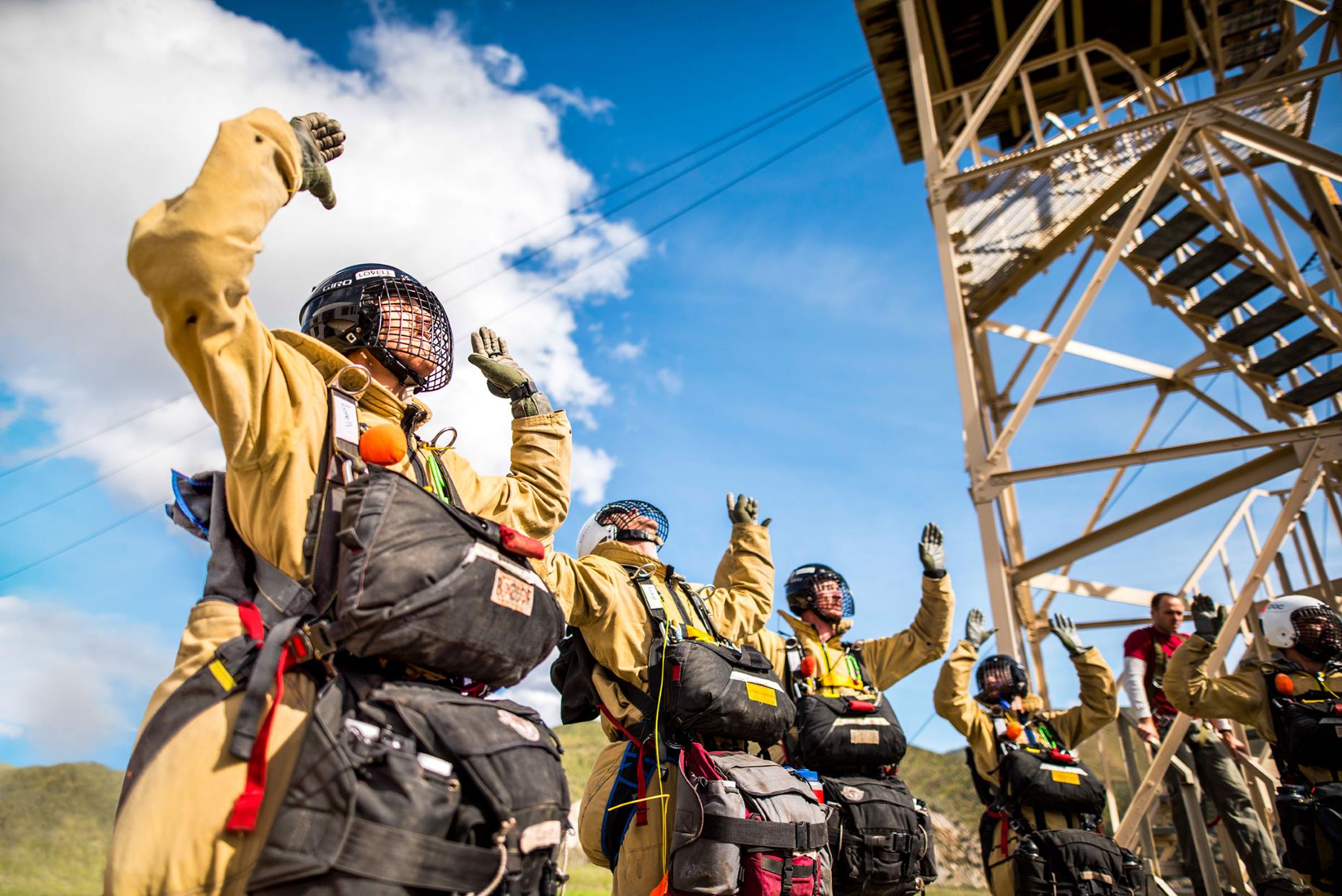
Smokejumpers are a unique and adventurous group of firefighters who are specially trained to combat wildfires in remote and rugged areas. Their expertise lies in parachuting into the heart of the flames, armed with the necessary tools to control and extinguish the fire. It is a challenging and demanding profession that requires courage, physical fitness, and extensive training.
In this article, we will explore ten fascinating facts about smokejumpers, shedding light on their history, training process, equipment, and the invaluable role they play in protecting our forests and communities from devastating wildfires. From their origins in the United States to their specialized training techniques, these facts will provide a comprehensive glimpse into the world of smokejumpers and the remarkable work they do.
Key Takeaways:
- Smokejumpers are highly trained firefighters who parachute into remote areas to fight wildfires, requiring both physical and mental strength to handle dangerous situations.
- Smokejumping began in the 1930s as a rapid response to forest fires, and smokejumpers undergo rigorous training, work in small teams, and have a strong camaraderie.
Smokejumping takes courage and skill.
Smokejumpers are highly trained firefighters who are deployed by parachuting into remote wilderness areas to combat wildfires. It requires both physical and mental strength as they take on dangerous and unpredictable situations.
Smokejumping dates back to the 1930s.
The practice of smokejumping began in the United States in the 1930s as a way to quickly respond to forest fires in remote areas. It has since expanded to other countries with similar landscapes and fire issues.
Smokejumpers undergo rigorous training.
Before becoming fully-fledged smokejumpers, candidates must complete an intense training program that includes physical fitness tests, parachute training, fire behavior classes, and emergency medical training.
Smokejumpers are experts in fire behavior.
Smokejumpers have an in-depth understanding of how wildfires spread and behave. This knowledge allows them to assess the situation, develop strategies, and make informed decisions when battling fires in challenging terrain.
Smokejumpers are self-sufficient.
Once on the ground, smokejumpers must rely on their own supplies and equipment. They carry everything they need to survive and fight fires for multiple days, including food, water, shelter, and firefighting tools.
Smokejumpers work in small teams.
Smokejumping operations are typically carried out by small teams of highly skilled individuals. These teams work together closely and rely on each other’s expertise to safely and efficiently tackle wildfires.
Smokejumpers use specially designed parachutes.
Smokejumpers use parachutes specifically designed for their unique needs. These parachutes offer stability and control during descent, allowing the smokejumpers to land safely and accurately in remote areas.
Smokejumpers have a high level of physical fitness.
Due to the demanding nature of smokejumping, firefighters undergo rigorous physical training to ensure they are in excellent shape. This helps them handle the physically challenging aspects of their job, such as carrying heavy equipment and maneuvering through rugged terrain.
Smokejumpers have a quick response time.
Smokejumpers are known for their rapid response capabilities. They are always on call and ready to deploy within a short notice, ensuring that wildfires are addressed swiftly to minimize damage and protect communities.
Smokejumpers have a strong camaraderie.
Smokejumping fosters a tight-knit community among its members. These firefighters share a unique bond built on shared experiences, trust, and reliance on one another in high-pressure situations.
Conclusion
Smokejumpers are the unsung heroes of firefighting, risking their lives to combat wildfires in remote and inaccessible areas. With their specialized training and equipment, they play a crucial role in preventing the spread of fires and protecting lives and property. These highly-skilled firefighters are a vital asset in the fight against wildfires.
From their extensive training to the challenges they face on the job, smokejumpers embody bravery and resilience. They possess a unique set of skills that allows them to parachute into the heart of wildfires and quickly establish containment lines. Their work is physically demanding and mentally challenging, requiring them to make split-second decisions in high-pressure situations.
Smokejumpers work together as a close-knit team, relying on each other’s expertise to safely navigate through dangerous and unpredictable conditions. Their dedication and commitment to their mission make them a vital component of wildfire suppression efforts.
In conclusion, smokejumpers are highly trained firefighters who provide a critical service in combating wildfires. Their courage, skills, and teamwork make them an invaluable asset in protecting forests, communities, and lives.
FAQs
Q: What is a smokejumper?
A: Smokejumpers are highly trained firefighters who parachute into remote or inaccessible areas to combat wildfires.
Q: How do smokejumpers get to the fire location?
A: Smokejumpers are transported by aircraft to the vicinity of the fire, where they jump with their equipment and supplies.
Q: What kind of training do smokejumpers undergo?
A: Smokejumpers undergo extensive training in parachuting, fire behavior, wilderness survival, and medical response.
Q: How many smokejumpers are there?
A: The number of smokejumpers varies depending on the season and region, but there are approximately 400 smokejumpers in the United States.
Q: What are the risks involved in smokejumping?
A: Smokejumping is a high-risk occupation, with hazards including extreme weather conditions, difficult terrain, and the unpredictability of wildfires.
Q: How long do smokejumpers stay at the fire location?
A: Smokejumpers typically stay at the fire location for several days, working to contain and extinguish the fire before being extracted.
Q: Are smokejumpers used in all wildfires?
A: Smokejumpers are typically utilized for remote and inaccessible wildfires where ground-based firefighting crews cannot easily reach.
Was this page helpful?
Our commitment to delivering trustworthy and engaging content is at the heart of what we do. Each fact on our site is contributed by real users like you, bringing a wealth of diverse insights and information. To ensure the highest standards of accuracy and reliability, our dedicated editors meticulously review each submission. This process guarantees that the facts we share are not only fascinating but also credible. Trust in our commitment to quality and authenticity as you explore and learn with us.


